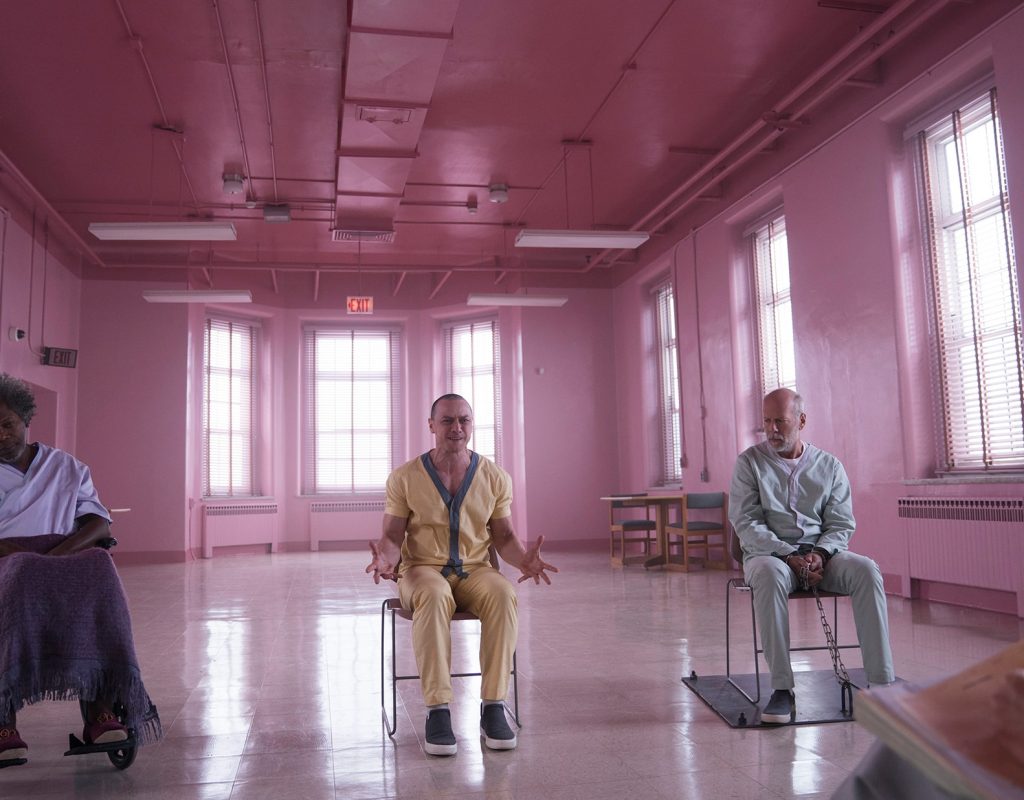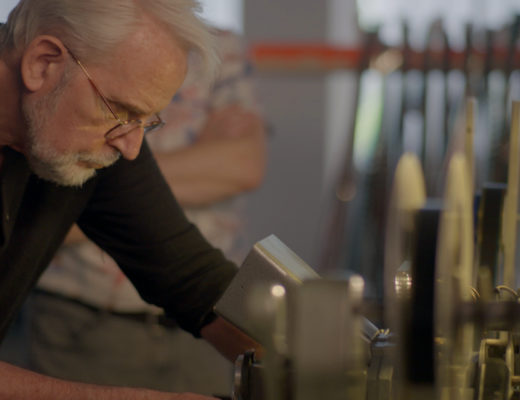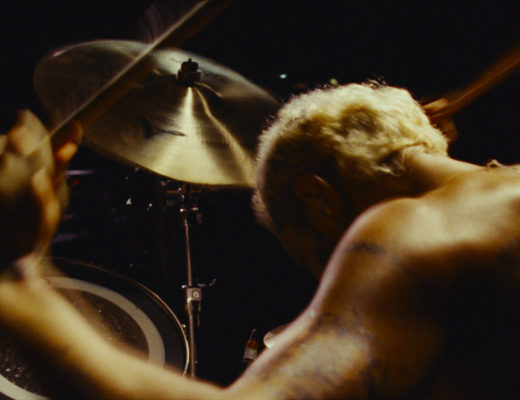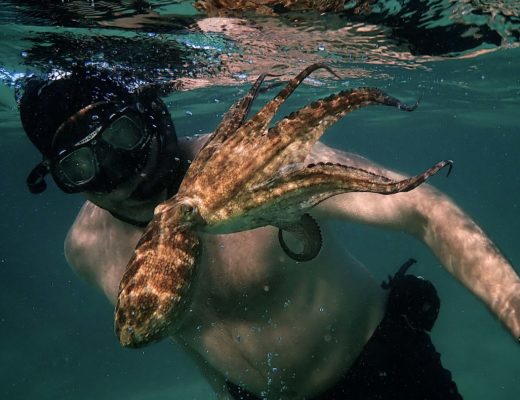Luke Ciarrocchi is best known for his work with groundbreaking director, M. Night Shyamalan. Their collaboration, as editor and director, includes The Visit, Split and Shyamalan’s most recent installment of the Unbreakable trilogy, Glass. In addition to this work, Ciarrocchi also assisted on several of Night’s other movies including After Earth, The Last Airbender, and The Happening.
As I read back through our interview I was struck by the great examples that Ciarrocchi could detail of solving difficult storytelling problems with creative editorial solutions.
(This interview was transcribed with SpeedScriber. Thanks to Martin Baker at Digital Heaven)
HULLFISH: So I saw that you kind of started working with someone that I’ve interviewed before, Conrad Buff. What a great way to start your career.
CIARROCCHI: Yes. I worked with Conrad as an editorial PA on The Happening and as an apprentice editor on The Last Airbender. Working with him and his crew — Carole Kenneally, his first assistant — to start out in the industry working with people of that caliber, at the top of their field and then on top of that are the nicest people you could ever meet, that was a great first step into this industry. I know it doesn’t always go that way. The industry isn’t full of people like that. I was very lucky.
HULLFISH: Because I interview so many different editors. I actually can see a family tree of working methods passed from one editor down to the people who’ve worked with them. Is there a method of Conrad’s or Carole’s that you’ve adopted and maintained?
CIARROCCHI: From a technical standpoint, how I approach my projects, my organization, how I set up my scene bins, how I set up my reels, it’s all a direct rip-off of how they did things. Even down to checking and organizing dailies and all that stuff — I passed that on to my first assistant when I started editing for Night. That’s a testament to Carole. She was a great teacher.
HULLFISH: Tell me a little bit about that transition from working under Conrad for Airbender — which was a Night project, right? — and on The Happening. How did the transition happen from that to where you are now?
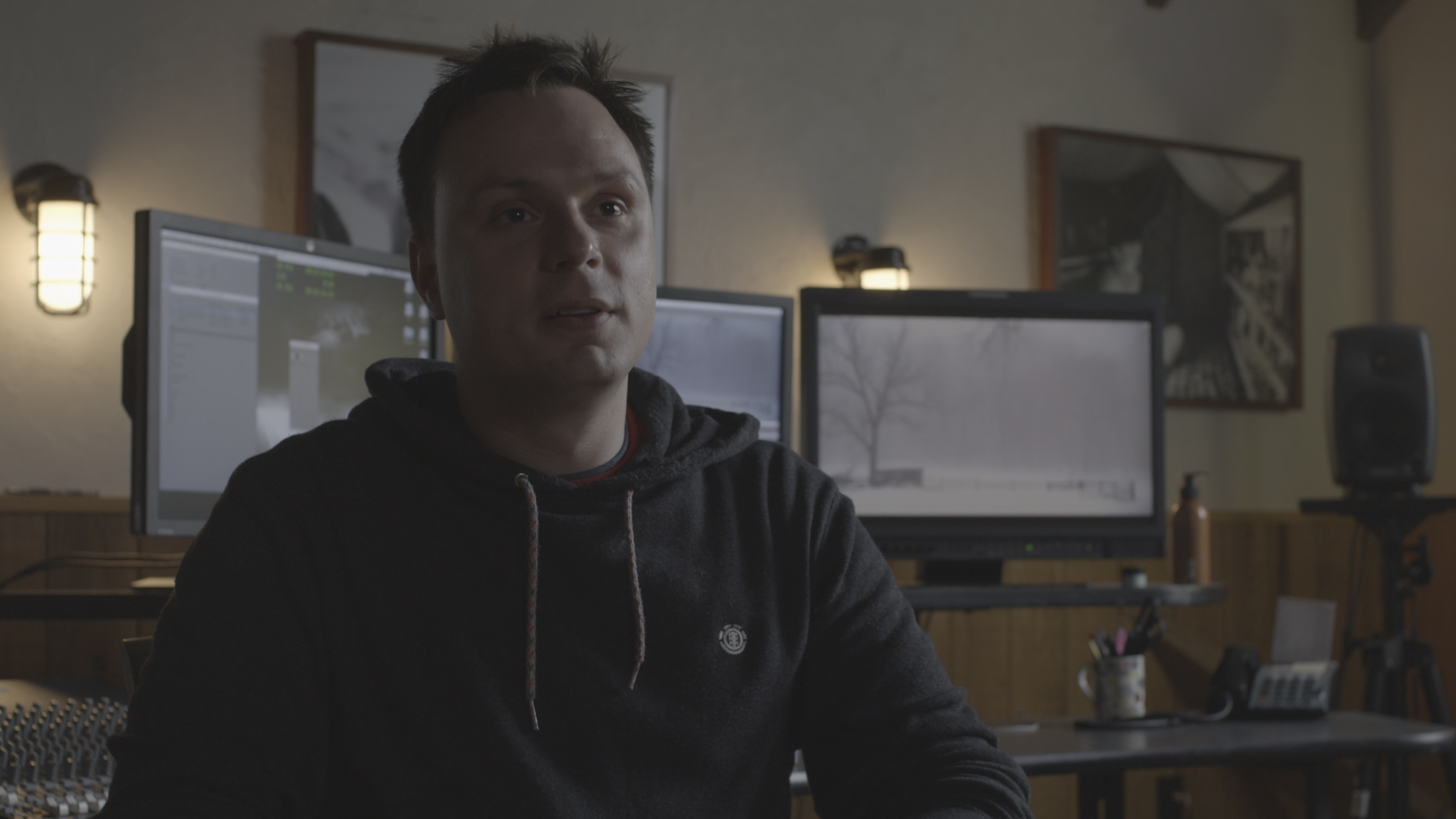
CIARROCCHI: I had a very unique and definitely rare path to where I am now. I’m talking to you right now from my house in Media, Pennsylvania, which is just outside Philadelphia. It is ten minutes away from my parent’s house where I grew up. I went to college 20 minutes from there — Temple University — and Night shoots all of his films in and around Philadelphia and posts 6 minutes from where I currently sit. I never had to leave a 20-mile radius of my childhood home. This isn’t LA, its Delaware County. So pretty unlikely that this would happen in this way.
The path was – I was a film major at Temple and when I was about to graduate one of the film professors knew Night’s producer, Sam Mercer, and told us that they were looking for PAs on The Happening. So a group of us from that class sent in our resumes and I waited. That was the spring of 2007 and I knew they were scheduled to start shooting later that summer. I started hearing from other people that they were starting to get hired but I never heard anything. I was pretty bummed, I thought I had missed the boat because a couple months went by, but suddenly late in the summer, I got a call for an interview with post-production — who I now know tends to crew up last.
I don’t know, maybe my resume was physically at the bottom of the pile so it was one of the few left after they staffed up production. But whatever it was I’m glad because I interviewed with Sam Mercer, then I interviewed with Carole and I got the job. It was your classic Post PA job. I was driving to and from New York picking up hard drives with our dailies and running it back and forth. Our sound team was also in NY so I was running stuff back and forth to them. Getting coffee. Getting lunch. I formed a really great relationship with Conrad and Carole on that film. I enjoyed every second of it and was thrilled to be that close to the action. And then, like all films, it ended.
I went on to do some commercial work at Comcast here in Philly. That’s where I first got onto an Avid. It wasn’t the most glamorous material, I was working third shift, but I was getting great hands-on experience. I was working there for about 7 months when I got a call from Carole that they were coming back to do Airbender and they wanted me to join the union and be their apprentice editor. Calls like that are great and of course, I said “yes.” It wasn’t really until that film that I started to form a relationship with Night.
 He was starting to recognize me. He knew I’d been on The Happening. He knew me as, Luke; the local Philly guy – I think I was the first local union editorial person in Philly- and toward the end of that film I even had a few opportunities to weigh in on some creative choices.
He was starting to recognize me. He knew I’d been on The Happening. He knew me as, Luke; the local Philly guy – I think I was the first local union editorial person in Philly- and toward the end of that film I even had a few opportunities to weigh in on some creative choices.
The big breakthrough — like how you take a freshly minted apprentice and bump that guy up to be your editor when you probably have your choice of anyone in the industry — was on After Earth. During development of that film, I did a lot of animatics for him, taking the storyboards from his storyboard-artist and putting them in After Effects and cutting them up and animating them — mostly for the action sequences — putting music to it, sound effects, and really taking them to a pretty legit level. It was like low-rent pre-vis. And we did that for a few months. That was my first big creative back-and-forth with Night. We would recut them, add a shot, etc. I’d take them home, work for a week, come back and we’d go through them.
Once production started, I got hired as an apprentice editor with a new editing crew that was doing that show. Near the end of After Earth, we were getting in a crunch and I started being able to cut some scenes. Actually diving into the footage and cutting scenes of Will Smith and his son Jaden. It was pretty surreal and I remember how nervous I was sitting there with Night behind me just thinking- don’t mess this up dude, I don’t know how we got here, but don’t. mess. this. up. I was out-of-body editing.
Not very long after that film ended I got a call from one of Night’s assistants who said Night wanted me to come in to talk about his new script. And so I went in and he handed me a script and asked me to be the editor on his new film The Visit. I honestly don’t remember how I responded. I remember driving home from that meeting on the phone with my wife telling her the news and I was like, he asked me to edit his next movie, he gave me the script, and that’s all I can remember.
Night said he knew he was taking a risk, but he really thought I was right for it, but that if it didn’t work out and it was too much for me, he didn’t want that to affect the friendship we had built over the previous years, which was comforting. We acknowledged the elephant in the room immediately. That was 2013 and now we’ve done three films together.
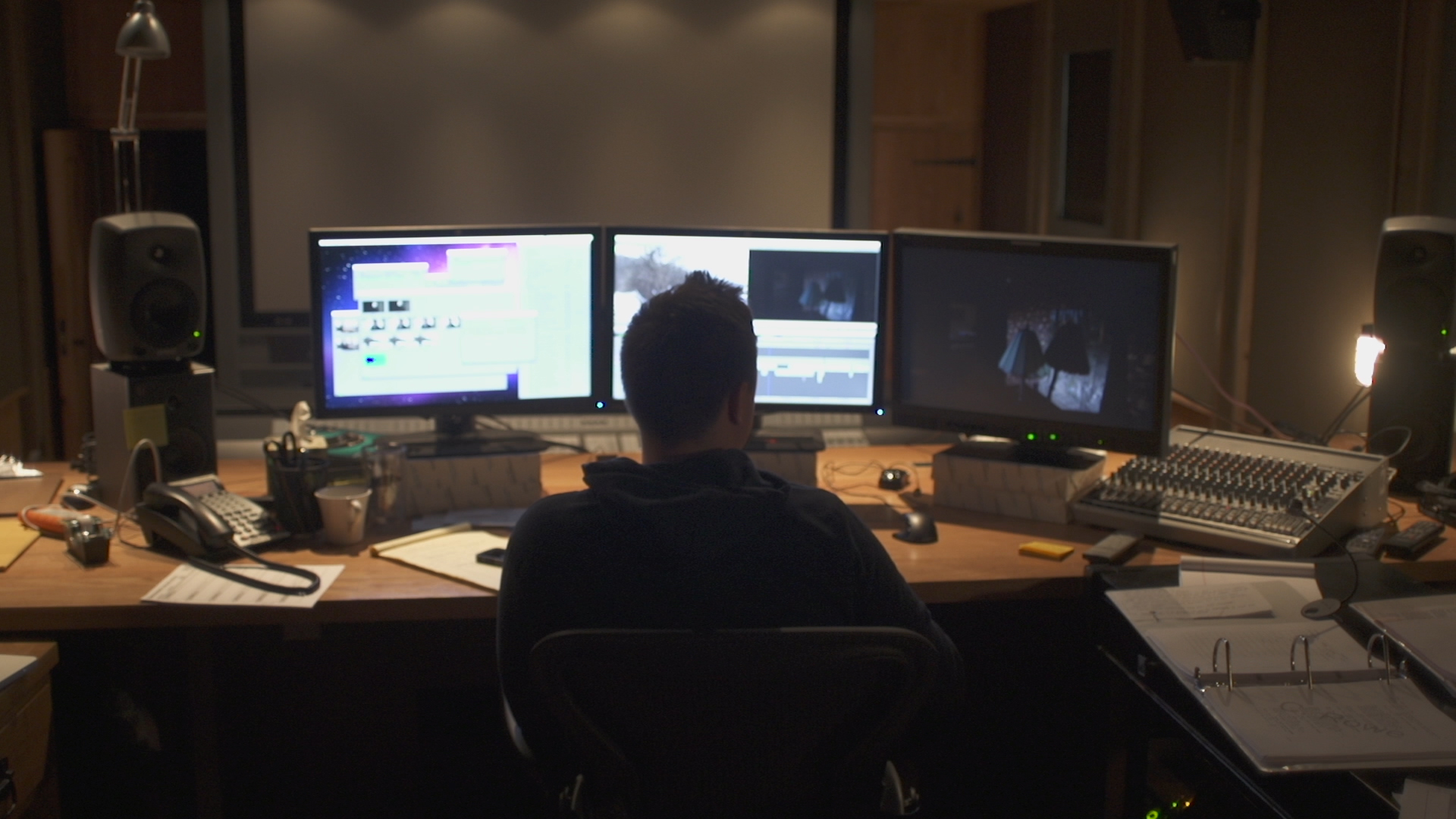 HULLFISH: I worked on a film where we had some PAs that instantly stood above the rest and one of them eventually was promoted all the way up to assistant editor. It wasn’t that I looked at her and said, “You are a great editor.” It’s that it was obvious how smart she was and how hard she worked and how detail-oriented. And she owned her failures and she was fun to be around. Those were the things that counted above all else.
HULLFISH: I worked on a film where we had some PAs that instantly stood above the rest and one of them eventually was promoted all the way up to assistant editor. It wasn’t that I looked at her and said, “You are a great editor.” It’s that it was obvious how smart she was and how hard she worked and how detail-oriented. And she owned her failures and she was fun to be around. Those were the things that counted above all else.
CIARROCCHI: Yes. Enjoying the people you’re working with. If you enjoy the person’s company, if you communicate easily, if you share a sense of humor, probably everything else will come. That was Carole’s philosophy. Who do you feel the most comfortable around? Who do you connect with the most? There’s not a lot of time in the editing room for bad communication. You want everybody to be as genuine as possible. If there are problems, you want someone honest enough to own up to it and let you know. They need to be confident and secure enough to tell you what they do or don’t understand. and very simply put, you might be spending 10, 12, 14 hours a day with these people. You better get along!
Also, if you’re a PA who’s getting coffee: Get the coffee the best! Make it so nobody has ever gotten coffee better than you in the history of getting coffee. And the people above you will notice that and think; If they do that for coffee, what would they do if we gave them this other responsibility? If they have that level of passion and detail and care, what if we gave them something else to do? That’s how I became an apprentice with Conrad and Carole, and I believe ultimately how I became Nights editor.
 HULLFISH: And I love the fact that the set seems to be the place all these film grads want to go, but on the set, you’re probably an anonymous face in a crowd of 100 people, but in post, even if you’re a PA, you’re one of only 3 or 4 people that the director is coming into contact with and he’s going to notice you and remember you.
HULLFISH: And I love the fact that the set seems to be the place all these film grads want to go, but on the set, you’re probably an anonymous face in a crowd of 100 people, but in post, even if you’re a PA, you’re one of only 3 or 4 people that the director is coming into contact with and he’s going to notice you and remember you.
CIARROCCHI: On The Happening, Yes, there were a total of 5 people in editorial including me, which would actually be a lot for a show of that size if you were doing it today on an entirely digital show but they were still doing film dailies and a film conform on that one.
HULLFISH: You’re also on the project longer than the production people.
CIARROCCHI: Yes. Much longer. Everyone thinks of the set, the actors, and the cameras, when they think of making a movie, but editorial can go on for three, four, five times longer than that. It’s also much more private than the set. It’s a safer creative space I think. I think I’m drawn to that because I started out in fine arts. I’ve always loved movies. Jurassic Park was like religion to me when I was 11. But I also drew a lot and I painted. I just liked art in general and when I went to college I enrolled as a fine arts major and completed the foundation program there. After a year I switched my major to film and then almost immediately gravitated toward editing because it was filmmaking, but it had something reminiscent of fine arts. You have the intimacy with the material like you would have with painting or drawing. And ultimately I think that’s where the line between art and craft is. That intense relationship with your material. Knowing how the grains of charcoal are going to interact with the fibers of the paper, and just the right way to manipulate it so you get the exact effect you want. You’re living in the micro with the material. And editing is that. You’re living and breathing the material down to its smallest detail, understanding how one thing will interact with another. How one color will look next to another. Your painting but with emotions, and performance. It’s becoming too dark, then get a lighter reading of that line. There’s not enough tension, then create some.
HULLFISH: I tell people all the time, you just have to cut. Don’t worry about the software. Just get footage — shoot it on an iPhone — and just cut.
CIARROCCHI: Yeah it’s like Malcolm Gladwell’s 10,000 hours idea: That you need to spend 10,000 hours doing a particular thing to master it. You can watch every movie ever made and it will teach you something, but you’ll never really know why that cut happened the way that it did because you don’t know what happened one second or one frame after the cut. It’s hard to know the reasons behind the choices. You can say the same thing about painting. You can look at the Mona Lisa for as long as you want, study it with a microscope, but you’re not going to then pick up a paintbrush for the first time and paint your own Mona Lisa. You need to do the thing you want to do and then do it again, and again, and again. So you just need material — whether you shoot it yourself or not — and see how stuff interacts and why one thing works next to another thing and something else doesn’t. Why does one cut feel like a slap in the face and one feels so smooth that you don’t even notice it? and when you know the answer to that, it becomes one of your tools, one the brushes you can reach for. You have to know your material and your medium.
HULLFISH: I did some quick research: so Night had the script done around April 20 2017 and shooting started October 27th 2017. You started shooting in October so you’re working on a film October 2017.
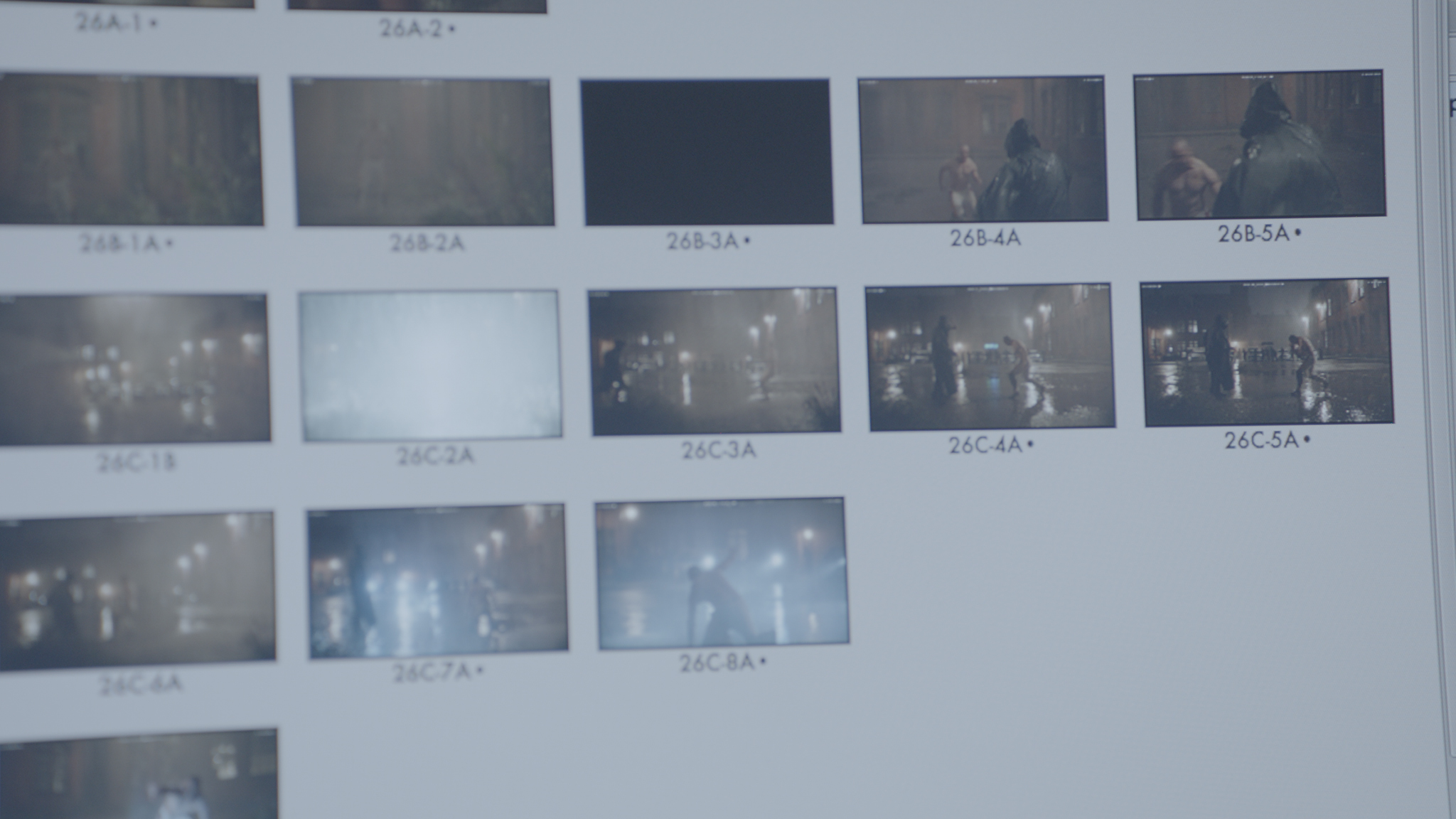 CIARROCCHI: Yeah, we started right at the beginning of October. But I was getting scripts over the summer. And I even went to the table read with the actors and some production meetings during pre-production. It’s helpful to start hearing the different departments talk about how they’re planning on executing something. I remember going to the studio and seeing the rough plywood buildout of one of the main sets and it changed my understanding about how those scenes might play out. I don’t think this is typical for an editor or even necessary but I’m here in Philly, I’m down the street, so why not get involved as soon as possible.
CIARROCCHI: Yeah, we started right at the beginning of October. But I was getting scripts over the summer. And I even went to the table read with the actors and some production meetings during pre-production. It’s helpful to start hearing the different departments talk about how they’re planning on executing something. I remember going to the studio and seeing the rough plywood buildout of one of the main sets and it changed my understanding about how those scenes might play out. I don’t think this is typical for an editor or even necessary but I’m here in Philly, I’m down the street, so why not get involved as soon as possible.
HULLFISH: Did you speak into the script at all before shooting?
CIARROCCHI: That’s one of the reasons he’s giving me the scripts early on. Is there something that jumps out? It’s better to know now than the day after the shoot ends. It can be small things, like while I was reading the first draft of Glass I noticed that it was a couple of days (in story time) after the main characters arrive at the psychiatric hospital that you realize that there are other patients at the hospital with them. It felt really good to get that info, and I wondered if we should have gotten it earlier or be getting more of it overall. So you know that this is a normal functioning hospital, not some secret nefarious facility where the three of them are being held in total isolation. I wanted to see those other people sooner. And we ended up doing that. So little things like that.
 HULLFISH: Is there a difficulty in editing something that has a canon that fans know — either from previous movies or comics or whatever?
HULLFISH: Is there a difficulty in editing something that has a canon that fans know — either from previous movies or comics or whatever?
CIARROCCHI: I’m a huge Unbreakable fan. My brother Bruno gave me a copy of Unbreakable when I was, I think, 18 or 19 and told me I had to watch it. He said it in that way where it feels like you’re being let in on a secret. He loved it that much. I loved it too and watched it throughout film school. So I knew the expectations fans had because I was one. The canon that Night has written is so ingrained in the DNA of the three films it’s almost impossible to mess that up. If you go back and watch Unbreakable after watching Split, they’re talking about the same things from different angles.
With Glass, it’s kind of the culmination of those two things. During Split, we were worried because Unbreakable is so beloved you don’t want to screw that up. So we were very conscious on both films of staying true to the spirit of what was established in Unbreakable, but also making sure they were uniquely their own films. Unbreakable is more of a comic book drama, Split more of a thriller, and now Glass is a hybrid of that.
On Split, it was interesting because a first-time audience doesn’t know that it’s taking place in the Unbreakable universe until the very last seconds of the film. So we had to make sure we weren’t tipping our hand too soon. A fun thing we got to do at the very end when The Horde is talking to themselves in the mirror about everything they had just experienced, the music underneath is score from Unbreakable.
Up to that point, there hasn’t been a reference to Unbreakable that the filmmakers couldn’t deny as purely a coincidence and now we are introducing a literal piece of Unbreakable slowly into Split. The cue builds through that scene. At first, it’s very subtle. You have to be a real big fan to identify it immediately, and then it keeps building over that scene and then the end title and then into the diner scene until the final reveal of David Dunn watching the news report about The Horde.
We went back and forth on using that there, and if we did, how soon to start it in the scene and at what part of the cue we should start at. At the first public screening we had at Fantastic Fest in Austin you could hear the crowd slowly understanding where we were going. A few people got it really early but not a lot, then more and more as the music swells into that iconic unbreakable theme. Then finally, bam! David Dunn. They lost their minds. It was an amazing experience to see that work like that. I’m actually a little jealous of those people. The fan in me would have loved to experience that!
HULLFISH: How long did you guys shoot on Glass? And then what happened after principal photography?
CIARROCCHI: We shot in October and November of 2017 and went into post in December. I was doing my assembly during the shoot and was always showing things to Night. We were always set up close to set so he could pop in at lunch or the end of the day if he had the time. We got to do that on the last two as well and it’s invaluable.
If something isn’t working we can spot it pretty quickly and if we need to pick up a shot we can do it. The crew was pretty impressive in that way on Glass. What they got shot in those two months is impressive and sometimes something from the assembly would reveal that we need XY or Z and it would just get squeezed into the next shoot day somewhere. They would make it work. It’s an epic film and they accomplished a lot. After we wrapped shooting I had about a week to myself at the beginning of December to finish off the assembly and then we started the director’s cut.
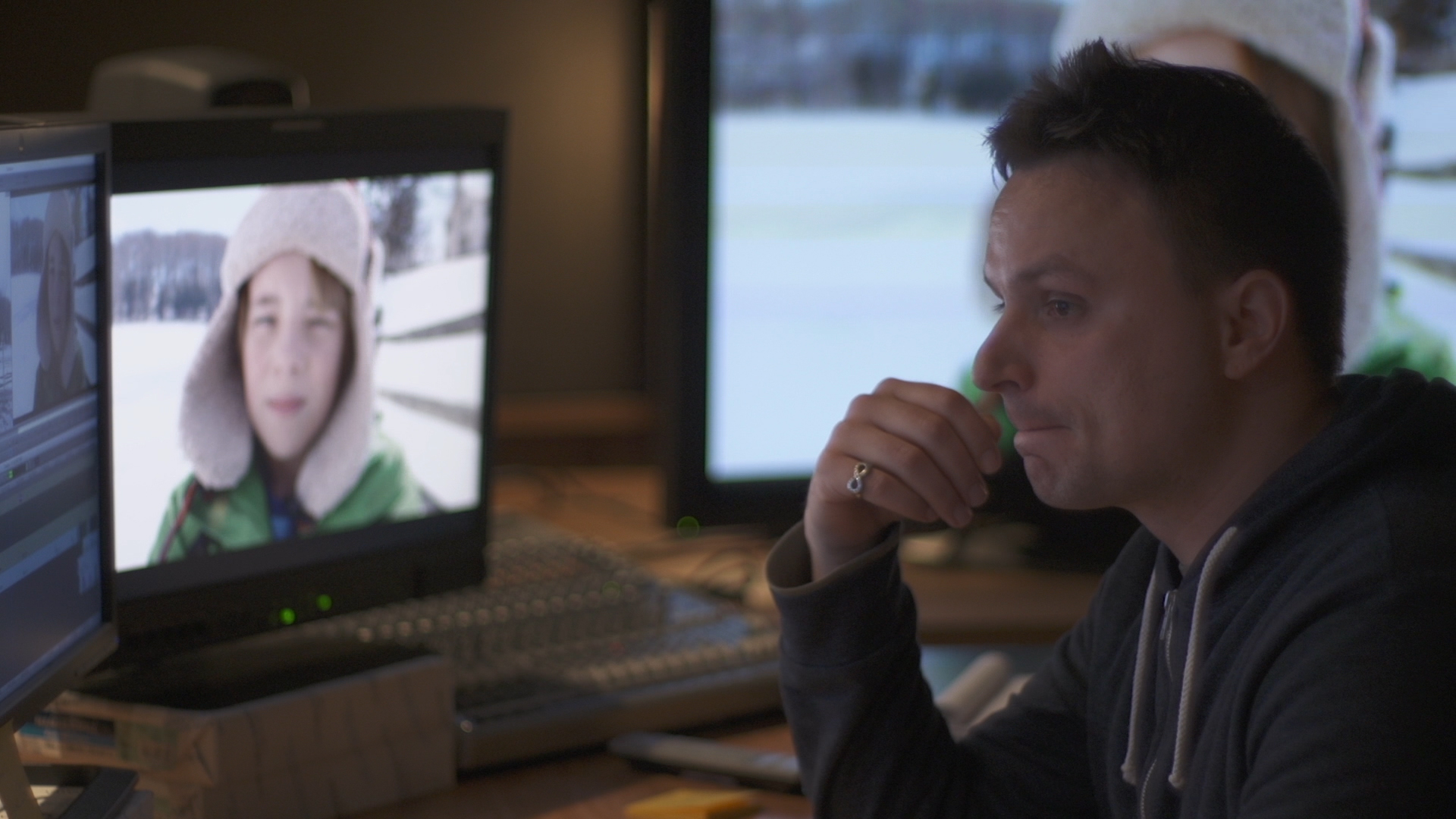 The way that Night has these films set up is – we have a post schedule, but we’re so lightweight, it’s just me and my assistant editor Kathryn Cates set up at Night’s offices with two Avids – if we need to go an extra month, we go an extra month. If we need to go longer then that, we go longer then that. If we want to check our work and squeeze in an extra screening, we do it. The way he set up The Visit and Split and Glass allows us to do that without great repercussions. With the release date in January on Glass, we had a large amount of padding there. The original schedule had us done in July, but it went through September and had some final sound and DI work in October.
The way that Night has these films set up is – we have a post schedule, but we’re so lightweight, it’s just me and my assistant editor Kathryn Cates set up at Night’s offices with two Avids – if we need to go an extra month, we go an extra month. If we need to go longer then that, we go longer then that. If we want to check our work and squeeze in an extra screening, we do it. The way he set up The Visit and Split and Glass allows us to do that without great repercussions. With the release date in January on Glass, we had a large amount of padding there. The original schedule had us done in July, but it went through September and had some final sound and DI work in October.
HULLFISH: Let’s talk a little bit about the process. One of my current pet questions or discussion points is the idea of how malleable the film is through post and that editing is a process that benefits from that exact kind of time you just discussed. Let’s talk a little bit about some of the things that changed and how things evolve from your editors cut. For example: how long was the first cut?
CIARROCCHI: If you included credits, it would have been somewhere around 3:25. The final run-time is about 2:08.
HULLFISH: Wow.
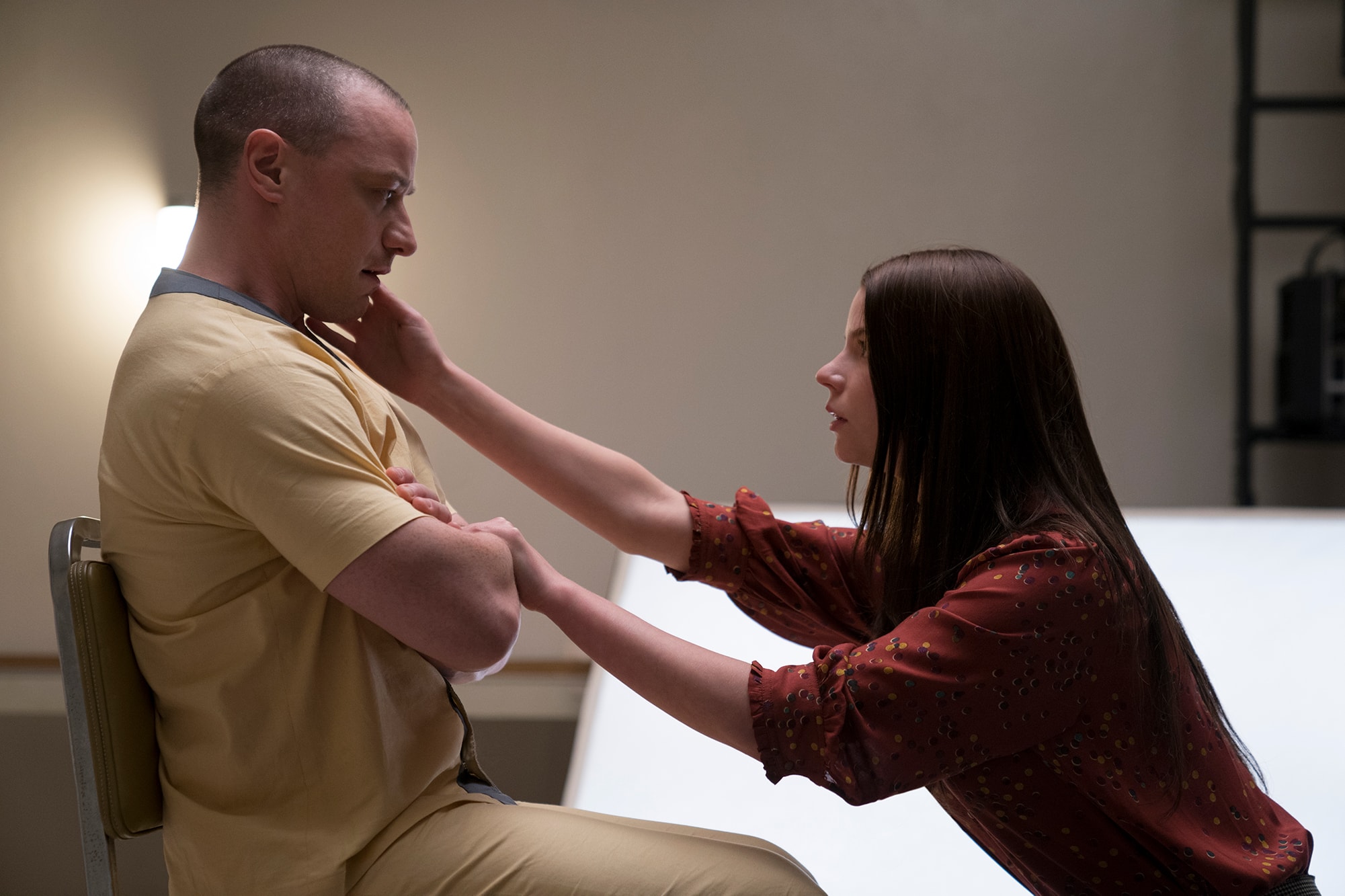 CIARROCCHI: Split was a very long assembly as well. It was 3:17 or something like that. And that ended up at 1:57. With both Split and Glass, there was an abundance of riches. It’s great to have that much stuff to work with and choose from but that also has really been the great hurdle on both films. That’s our challenge. Now, how do we get this to the length it wants to be and not over-cut it or undercut it? I read a quote once, and I’m probably butchering it, but its something like: “Editing is cutting as much away as possible without nicking the soul of the film.” I believe that 100%. You can’t even scratch the soul. You have to protect the heart of the story and the script. You can decide the movie’s running too long and you’re not hitting the beats you want to hit but you have to protect what makes it special. You might start pulling this or that out and it’s getting better, so you keep going and it feels great, but suddenly you’ve gone too far and becomes emotionless. Meaningless.
CIARROCCHI: Split was a very long assembly as well. It was 3:17 or something like that. And that ended up at 1:57. With both Split and Glass, there was an abundance of riches. It’s great to have that much stuff to work with and choose from but that also has really been the great hurdle on both films. That’s our challenge. Now, how do we get this to the length it wants to be and not over-cut it or undercut it? I read a quote once, and I’m probably butchering it, but its something like: “Editing is cutting as much away as possible without nicking the soul of the film.” I believe that 100%. You can’t even scratch the soul. You have to protect the heart of the story and the script. You can decide the movie’s running too long and you’re not hitting the beats you want to hit but you have to protect what makes it special. You might start pulling this or that out and it’s getting better, so you keep going and it feels great, but suddenly you’ve gone too far and becomes emotionless. Meaningless.
You’ve pulled out just one too many things. It’s not special anymore. So it’s making sure you don’t do that on a scene-by-scene basis and then on the overall movie as well. But the flip side of the quote is also, if you don’t need it, get rid of it. Don’t lug around unneeded weight. Too much is just as damaging as too little. You have to embrace both sides of the coin equally. Night’s movies are very commercial, but they’re also very auteur-driven. People go to see his movies because it’s an M. Night Shyamalan movie. There’s a sweet-spot for that in regards to length. These aren’t going to an art house theater where a 2-hour 45-minute movie might be fine with the audience that goes there. But it’s also not the thriller-of-the-month. It’s a special event. There are performances in there that need time to live and breathe. There’s plot that needs to set you up so later it can come back around and knock you down. There’s cinema that requires you to let it linger. Or else it’s nothing at all.
HULLFISH: I’m working now with a writer/director and I feel bad that — as we’re trying to cut a 2:37 minute movie down to 2 hours — my job is to suggest all of the “fat” we could cut. But obviously, every sentence he wrote and every scene he wrote has a purpose. But SOMETHING has to go. Sometimes I’ll suggest something and he doesn’t really want to do it, but he agrees to give it a try and then he likes it; but sometimes he is shocked that I could even suggest a certain thing gets cut. Do you have these discussions?
CIARROCCHI: We do. I’ve never worked with anyone but a writer-director. Night is also the financier, he’s paying for these movies with his own money, so now that’s a whole other level of being invested in every frame, every word. He pours himself into the scripts. So sometimes you have to be a therapist. A therapist asks a lot of questions. They don’t start making a bunch of critical observations. Your writer/director wrote these things and they love them and they know why they’re there. There’s not anything there that doesn’t have purpose or reason, but sometimes for the betterment of the overall experience, some of these things have to go. It’s finding the right way to propose those things: what you might want to lose.
The right time to propose them is also important. You might think a scene isn’t going to last, but maybe it’s not today that it needs to go. It’s not where your energy needs to be at this minute. You also have to pick your battles because if you have too many battles happening at once it can be exhausting. So you gotta stay focused. But at the same time, you have to ground yourself in the reality that this probably won’t be a 3-hour movie, so where is that time coming from? It’s a balance. You have to have patience and trust the process. Always trust the process.
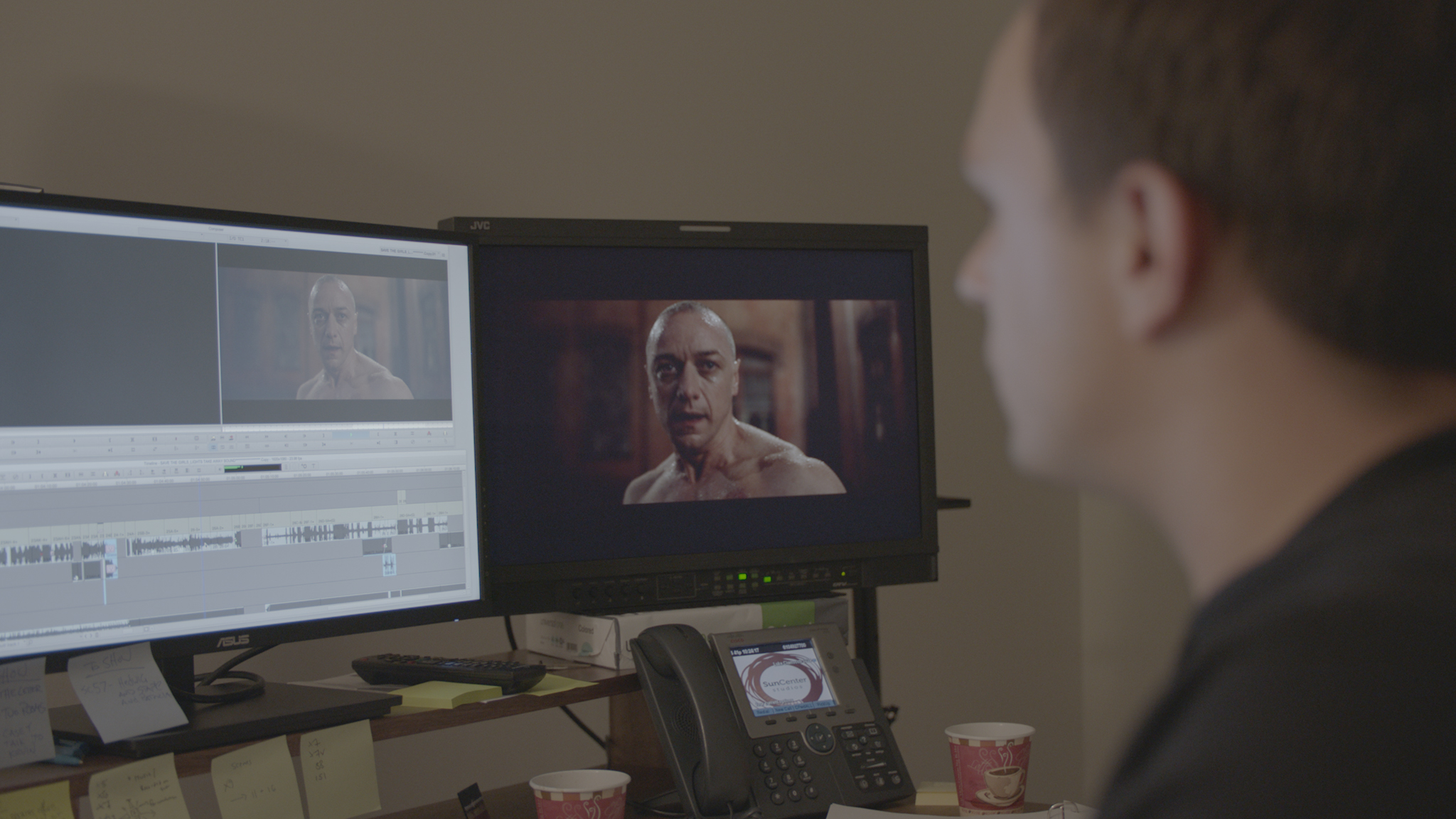 HULLFISH: I love that comment you just made. I completely agree. Patience is a key aspect. You have to think: I don’t think we need these lines. I don’t think we need this scene, but I’m just going to keep my mouth shut for now because if I feel this, maybe he’ll feel this.
HULLFISH: I love that comment you just made. I completely agree. Patience is a key aspect. You have to think: I don’t think we need these lines. I don’t think we need this scene, but I’m just going to keep my mouth shut for now because if I feel this, maybe he’ll feel this.
CIARROCCHI: Yeah, or an audience will feel it or MAYBE, and this is possible, you’re wrong, and you were looking in the wrong spot. Sometimes you start focusing on something where you feel like a scene is dragging, and something’s just not working here. But really it’s what it took to get you to that scene. That’s what’s really doing it. You have already divulged so much information in another way earlier in the film that now the later scene doesn’t feel so valuable. But really what you want to do is lose the stuff earlier. It feels less offensive because it came first so its not redundant, but really, it’s more powerful later. So you have to diagnose things carefully. There are a lot of false positives in editing I think, so you have to be careful you don’t amputate the wrong limb.
HULLFISH: So because his films are so intricately scripted, cutting any of that hour that you have to cut is a danger.
CIARROCCHI: Well, over an hour, but yeah. From my assembly, we just shave one layer off of it at a time. Little thin slices as we go through looking for that soul. My first screening for Night, I think was 3:17… something like that. We didn’t ever watch the full assembly straight though. We did a pass first and lost about 10 minutes. Then there was a little “friends and family” screening that was 3:08. So another 10 minutes. Then another screening that was more than just friends and family and that was 2:50 something, then we did a 2:40 something. We weren’t taking huge leaps. We can take our time and make these decisions. It’s more of the pace when people were cutting actual film, post-production was longer then. Nowadays, some post schedules are like: “get the movie out yesterday!” Before things went digital post had time to breathe. Make mistakes, go too far, dial it back, and find the correct cuts instead of just this race to the finish line.
 HULLFISH: Sure, Avid allows you to cut faster, but you still have to think the same amount of time and that’s most of it, right?
HULLFISH: Sure, Avid allows you to cut faster, but you still have to think the same amount of time and that’s most of it, right?
CIARROCCHI: When people were cutting film, there was downtime when someone physically had to go get that piece of film, and cue it up. So there’s time to discuss it and think about it. Today, retrieving that same shot takes seconds which makes it very easy to get caught up in doing endless versions: let’s just try versions and versions and versions. But sitting back and just talking it out and finding that specific thing we are trying to achieve or getting to the core of what isn’t working can produce results you’d never get just wandering around in the dark hoping you stumble on the answer.
An interesting example of this on Glass happened with a scene shot entirely out of a second or third story office window looking down at a parking lot. The whole scene was a oner. A group of our main characters shows up in this parking lot and the intent of the scene is that it’s very coincidental and almost destiny that they would all show up there at that exact time. And each one of them has a line as they show up. We were getting a lot of backlash about this scene that was less than a minute long. It was coming up after screenings. Which is weird for such a short scene. It was just meant to bring these people together with a little mystery, but completely cutting it out would have repercussions, because a couple scenes later all these people who weren’t together would suddenly be having a conversation in a room totally out of left field.
But there really weren’t a lot of options because of the oner aspect of it. You could get in later, get out sooner, or both, and we tried all variations on that. But it didn’t really help. Or it didn’t solve the problem I should say. People still felt it was unbelievably coincidental. It was such a high and wide shot we could actually change what the characters were saying, which we tried variations of. When we ran out of things to try, we just started discussing it. It was sort of like we were having the scenes eulogy. “It was a good scene. It lived a good life. It was strong in this way, and that way…” and because of what we were saying, discussing its strengths and weaknesses I thought, “What if we just took out the audio entirely?” I spun around, pulled it out, put in some ambient room tone, and pressed play, and suddenly it’s right, you don’t know what they’re saying, but you’re intrigued by it and it seems even more like destiny when you don’t know what they’re saying to each other. And of course, it seemed natural that you couldn’t hear them. They were two or three stories down and we were on the other side of a window. We tried all these versions but by slowing down and talking about it for a while we came to a solution that didn’t immediately seem obvious.
HULLFISH: Great solution. Love it.
CIARROCCHI: It was about having the time to think and converse and realize that the audience didn’t need to be told what was happening. They wanted to figure it out and experience it.
HULLFISH: With movies like Night likes to make, that’s got to be a tough balance of how much you have to feed information to the audience and how much do you have to hide… and when exactly it gets revealed.
CIARROCCHI: Incredibly tough, there was a version of The Visit (…SPOILER AHEAD…) where the kids, who just met their grandparents for the first time, find out that the people they’ve been staying with for the past week weren’t really their grandparents. The kids have been staying with two escaped mental patients. There was a point in the post process where, even though — on camera — the kids’ mother explicitly says, “Those aren’t your grandparents” to the kids — the audience wasn’t processing it. We weren’t getting the reaction you would expect during screenings and afterward we were getting questions like “Why were their grandparents acting that way?” or “What was wrong with their grandparents?” THEY WEREN’T THE GRANDPARENTS! We told you that. It seemed like we couldn’t make it anymore obvious.
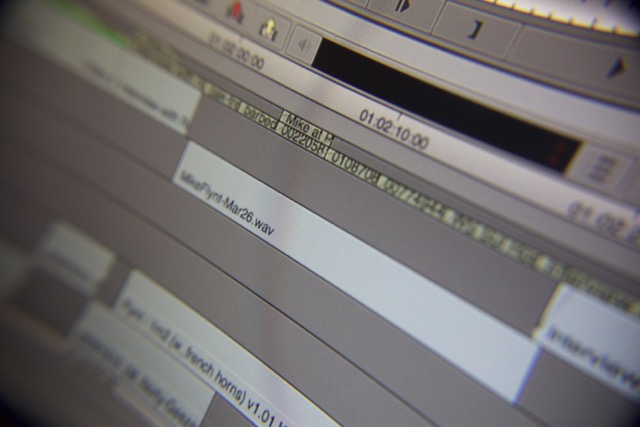 But we discovered that by changing the order in which the mother revealed the information to her kids and building out the pauses she took before and after, and then how much we let the kids react to the information, it dramatically affected what people left the film understanding. It was too big to fit into people’s brains too quickly. It was such a paradigm shift that they weren’t hearing it AT ALL. We tweaked that endlessly until we hit just the right pacing to give that information. Now it’s a chilling and freaky moment. and I remember the screening where I knew we had hit it. There were gasps where there weren’t before.
But we discovered that by changing the order in which the mother revealed the information to her kids and building out the pauses she took before and after, and then how much we let the kids react to the information, it dramatically affected what people left the film understanding. It was too big to fit into people’s brains too quickly. It was such a paradigm shift that they weren’t hearing it AT ALL. We tweaked that endlessly until we hit just the right pacing to give that information. Now it’s a chilling and freaky moment. and I remember the screening where I knew we had hit it. There were gasps where there weren’t before.
Working on Night’s films, I really became fascinated with the psychology of an audience. Understanding how people ingest information and how easily you can lead them in one direction and at other times how hard it is to then lead them in a new direction. Audiences are really trusting, so when you say, “actually we’ve been keeping a secret or lying to you,” you find out they may not be ready to accept that in that way.
HULLFISH: Oh interesting.
CIARROCCHI: In some these films, we’re changing the reality the audience just lived in for so long and so dramatically, it’s understandable that they aren’t immediately able to get onboard.
HULLFISH: That’s a tricky balance especially in the cutting room, to make sure that those things are paced properly; that stuff lands.
CIARROCCHI: In the example of The Visit, just giving those moments some air, time for the mom to say it and for the kids to look and have an appropriate amount of reaction. The audience is doing the same thing the kids are doing. They’re looking at the mom like, “What did she just say?” by adding in some beats the audience has a moment to look over at their friend to get validation that they heard what they think they heard. So now they’re oriented and ready to continue with the film.
HULLFISH: I’m really intrigued by your art background and how that has helped you: in the ways that you think that your interest in art or your abilities in art have translated to editing. Like, I come from a musical background and I definitely feel that my understanding of pacing and rhythm and dynamics — those are all things that I feel carry through from music to editing. What are some of those things that you feel you’re carrying with you from your art background into editorial?
CIARROCCHI: I’m not musical at all. My wife even says, “How can you edit things with rhythm when you can’t even clap on the beat?” (laughs) But editing is frozen in time, the beat can’t get away from me. and I can choose “and… now”
HULLFISH: So you can EDIT someone clapping in time.
CIARROCCHI: Right. Yes, because I have control over time and pace. but on the dance floor I’m screwed. But in terms of music and art, it goes back to a lot of what I was saying earlier. When you know your material so well that it’s an extension of yourself you’re just working from the gut or with your instinct. You’re making choices without thinking and you can only do that if you totally submerge yourself in your medium and understand it and struggle with it. Then you step back and look at the whole thing just like you would do with a painting and you see where the troubled areas are and you go back in and you work those areas now with a better understanding of how it works with the top of the canvas and the bottom. It needs to have peaks and valleys and negative space and positive space and dark and light. It needs shape. You need to have these pushes and pulls. If you see the two hours as a thing, you’re sculpting that.
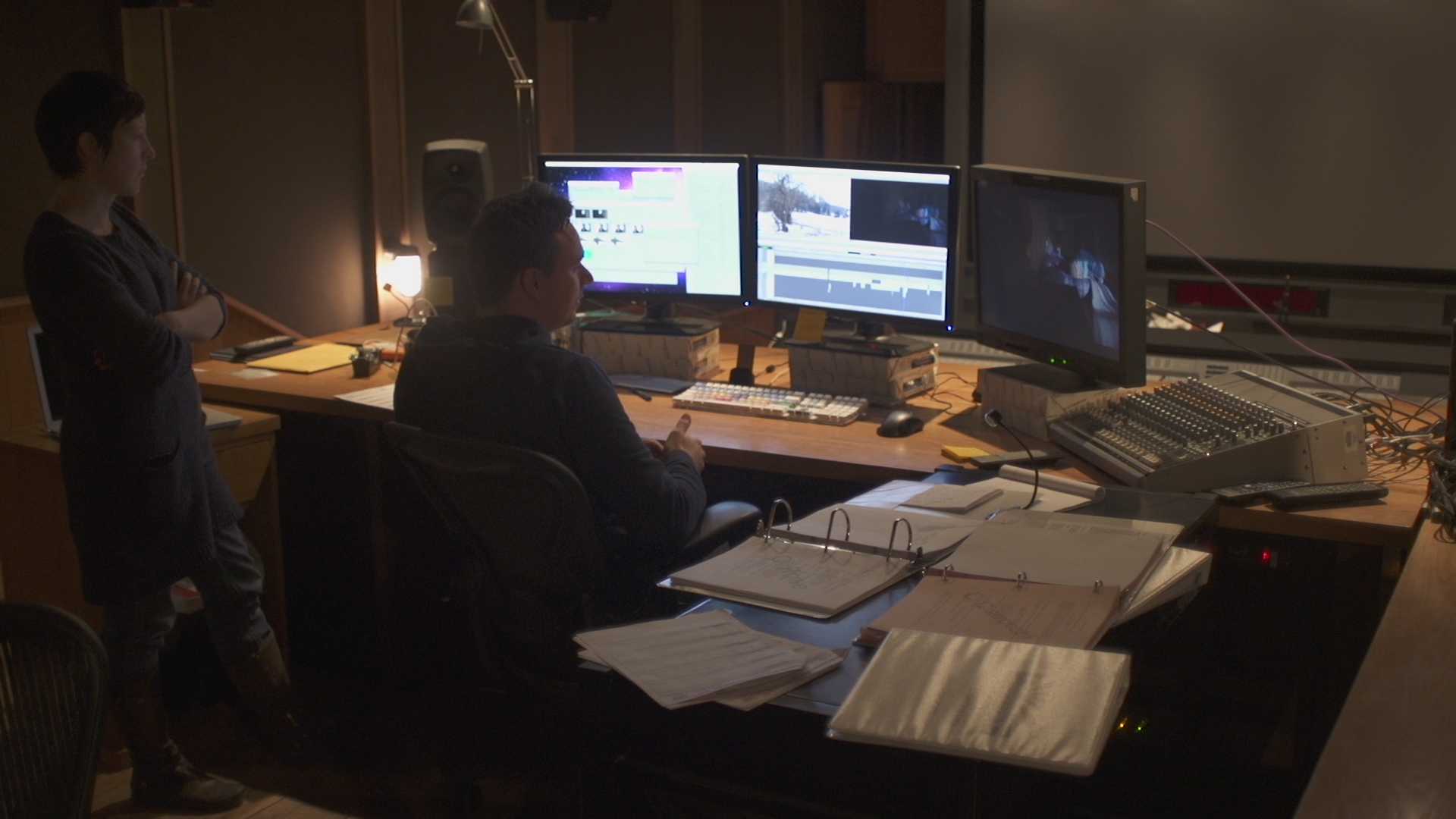 HULLFISH: As part of your process are you more of a painter who is adding paint to the canvas, or more of a sculptor chiseling stuff away? What’s your process to go from dailies to a first cut of a scene?
HULLFISH: As part of your process are you more of a painter who is adding paint to the canvas, or more of a sculptor chiseling stuff away? What’s your process to go from dailies to a first cut of a scene?
CIARROCCHI: I’ll always start with the script. Because my experience is so heavily built upon Nights style — working in his style of filmmaking — he storyboards everything. He doesn’t do a ton of coverage if he doesn’t need it.
So with the assembly, I’m trying to put together the film as he saw it; as he wrote it; and then you go from there. Find the best takes, best performances, and build an assembly out of those things. Nothing’s getting cut out during that time. I wouldn’t show him a scene for the first time with stuff cut out. So in this respect, I guess I’m completely a sculptor, because I’m starting with the entire block of marble, nothing more nothing less, and proceeding from there.
I saw the statue of David once and I was completely awestruck. Honestly one of the great artistic experiences I’ve had. To think that it came out of a solid slab of marble. So I’ll happily put myself in the sculptor category. (laughs) But I’m pretty sure Michelangelo did it without [Ctrl + Z] so maybe not the same thing.
HULLFISH: What about restructuring? Aside from just removing things entirely. How often do you find that to be necessary?
CIARROCCHI: On Split, there’s this really interesting sequence where James’ character goes to the train station to finally become the beast: his 24th personality. In some ways, it’s the climax of the movie. They’ve been talking about it for an hour and a half. Is this real? Is this going to happen? And there was a point where it wasn’t really playing for people. People weren’t finding it scary, or they weren’t really getting on board with this major development. We were losing some people.
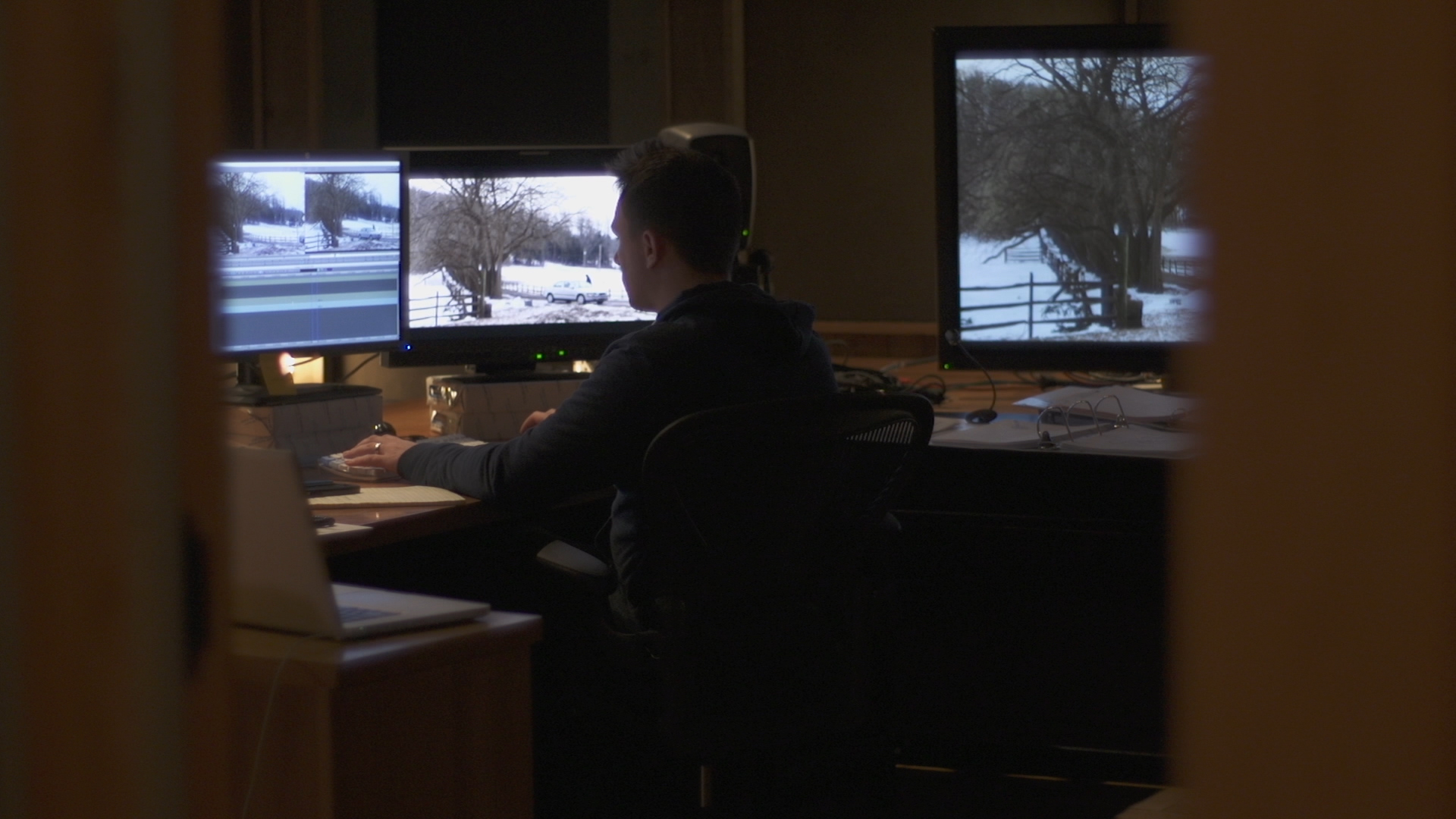 This wasn’t just a small moment in the film, it had to work or else we risked never getting those people back on board. So I started experimenting with intercutting some of the surrounding scenes, which then led to intercutting nearly the entire sixth reel of the film. There were these great scenes: Casey finally escaping her room. Then her on the computer watching these videos of all these other personalities all played by James. We also had the scene of the two other girls in another room trying to escape, and Dr. Fletcher, drugged, trying to get a message written down. They were all great scenes, but they were all playing in isolation.
This wasn’t just a small moment in the film, it had to work or else we risked never getting those people back on board. So I started experimenting with intercutting some of the surrounding scenes, which then led to intercutting nearly the entire sixth reel of the film. There were these great scenes: Casey finally escaping her room. Then her on the computer watching these videos of all these other personalities all played by James. We also had the scene of the two other girls in another room trying to escape, and Dr. Fletcher, drugged, trying to get a message written down. They were all great scenes, but they were all playing in isolation.
We originally had been playing the train transformation as a horror moment, like a werewolf transformation. Through this intercutting, I discovered that what it really wanted to be was an emotional event rather than a scary one. This poor guy is going to this train and he believes these crazy things. Back at home, he has all these people whose lives are in danger if this is real and on top of that there are all the other personalities inside of him, the good personalities, that we see playing in the videos on the computer that Casey is watching. They are also victims of this thing happening on the train. So being able to see and hear them while we see him getting closer and closer to this final transformation the scene becomes a swirling emotional peak at the end of the second act before we fully descend into the horrors coming up.
But when it was all played separately, it was more of this flatland of things that were emotional, but not connected. Now, for me, that sequence is the top of the rollercoaster, you get butterflies in your stomach as you go over the top and then you’re just horrified. It’s rare that you can find things that weren’t intended to be one way and work so well in this intercut fashion. But when it works, it works. This also goes back to something we talked about earlier: the dispensing of information and when and where to do it. By playing the transformation as a horror moment – as a werewolf transforming – it was making a very specific statement. The horror version says explicitly that this is a real bad dude that just showed up. The beast is real. And it may have been too much information to digest too fast. But the emotional intercut version leaves us with somewhere to go. The horrors are ahead. and the reveal that he is superhuman takes place over the rest of the film, not that single moment.
HULLFISH: But if you had suggested that idea of that massive restructuring in the first week, Night never would have gone along with it.
CIARROCCHI: No not at all. I did have the idea pretty early on and started experimenting with it on my own. But I didn’t have the confidence to do it that way that soon because all of the scenes, in and of themselves, were working. But its one of those weird things, I didn’t really know why I was doing it that way that early. I was just compelled to do it. Sometimes I know how I want something to be but I haven’t figured out the reason WHY I want it to be that way yet. Like I haven’t intellectually figured that out, that we are gonna have a train problem, or it shouldn’t be scary it should be emotional, etc. I’m just working on instinct. I feel drawn down a path, so I explore it. But it’s hard to have the confidence to fight for a gut thing until the rationale for it materializes. It’s the patience thing we talked about.
HULLFISH: But even if you DID have that foresight, you still couldn’t have had that discussion with the director without massive push-back until you see the effect that those scenes have on it or he never would have owned it. You have to have a problem before you have a solution.
CIARROCCHI: It’s his world, I’m just playing in it. Before there’s a known problem. most dramatic changes might seem like a preference instead of a need. So you’re never going to make a change like that in week two of post. But you’re right, you’re going to get push-back when you want to change things that dramatically that early and sometimes even late in the game you’ll find yourself getting push-back and you might never get to make a change you feel passionate about. But that’s the nature of the beast – pun intended – you’re there to help bring the director’s vision to life. You can suggest things, try things, but ultimately they will have the final say.
 HULLFISH: Let’s talk about music. It can so often either lead the audience or even lead them astray. What kind of temping are you doing for these films and how often do you find yourself not using music because the music gives too much away?
HULLFISH: Let’s talk about music. It can so often either lead the audience or even lead them astray. What kind of temping are you doing for these films and how often do you find yourself not using music because the music gives too much away?
CIARROCCHI: That is a huge question and an interesting one because the past 3 films have each had their own specific approaches to the final score. On The Visit, there is no music at all in the final film until the very, very end. The Visit is a “found footage film” where the main character — Becca — is making a documentary, so we left it completely bare. No music at all. Originally, there were a few scripted music cues that would play transitionally from one night into the following day, but we found that that was stepping on the tension. So obviously in this situation, there was no temp. Then on Split we had almost the exact opposite approach. We were essentially using preexisting licensable Ennio Morricone score with the intention of finishing the film with that as our score. So we were temping the film with something that could potentially become the final score.
HULLFISH: What?!!?
CIARROCCHI: I know. Wild, right. We had that Morricone score in there very deep into post, several screenings in. I did A LOT of music editing on that show. But we eventually realized it was putting a ceiling on the movie because the Morricone stuff is so iconic. His sound is so recognizable, even if you have no idea who he is or where it’s from, it’s so ingrained in the culture. So the first problem is that it definitely feels like it’s from a different era. The second and bigger problem was, it felt like we were intentionally being ironic with it. It would be like if we used the Jaws theme in a scene where we seriously wanted to scare people. That’s an extreme example because that’s about as iconic as you can get, but essentially it felt like we were consciously undercutting the film’s seriousness through music choices.
So, late in the game, we ended up pulling all of that and bringing in a composer- West Thordson. He’s amazing and came up with all the very iconic beastly cello growls in Split and all the other really great themes, like when Kevin Wendell Crumb meets Casey. We actually did a 180. He has a very modern and haunting sound and now I couldn’t imagine the movie without it. So that was our process on Split.
Then on Glass, we had your more traditional approach to score. We knew West would be doing it from the start, so I kept the edit dry for as long as it needed to be because if you put music on something, you can feel like, “Oh great, this is working.” but really it probably is not yet. The music’s doing a lot of the heavy lifting. So we typically do not put anything in until the scene is really working and we feel confident in it. On occasion, I might find a cue that I like – a piece of temp – and I’ll put it on a scene, I won’t edit the music at all I’ll just slap it on there and watch it for some inspiration. Just to get a vibe, then I’ll get rid of it. Because although music can be a bandage and prevent you from pushing the scene to work as best as possible, it can also inspire you to see the footage a little differently.
We often talk about “burn-out” in post-production. Where you’ve seen something so many times so many different ways that you start to lose perspective or lose sight of the cinema. A little music exploration can bring the spark back, for me. That whole train transformation montage I spoke about earlier, it really found its intention when I took one of Wests pieces from one of the scenes prior and very roughly made it continue over into the actual transformation. It’s a very emotional and beautiful piece, exactly the opposite of how we had been scoring it and thinking about it, and suddenly I saw the humanity, not the horror, and knew how to proceed. I took it out and continued to edit, but with a new perspective.
On Glass West was actually on location when we were shooting and he was recording sounds in this old shutdown mental hospital alone at night. He even brought a violinist to the hospital to play and record in some of the actual rooms we were shooting in. It was cool. He was making little pieces from what he recorded and experimenting with things and playing them for Night and me before the film was even done being shot. After the shoot, West moved into our post facility, so he was in the building with us for all of post. He was immediately accessible and there was the ability to have him audition things right from his system. He’d make changes, and turn it around to us fairly quickly. So I never used anything you could call actual temp on Glass because of this intense involvement of the composer from day one. Which I know is rare.
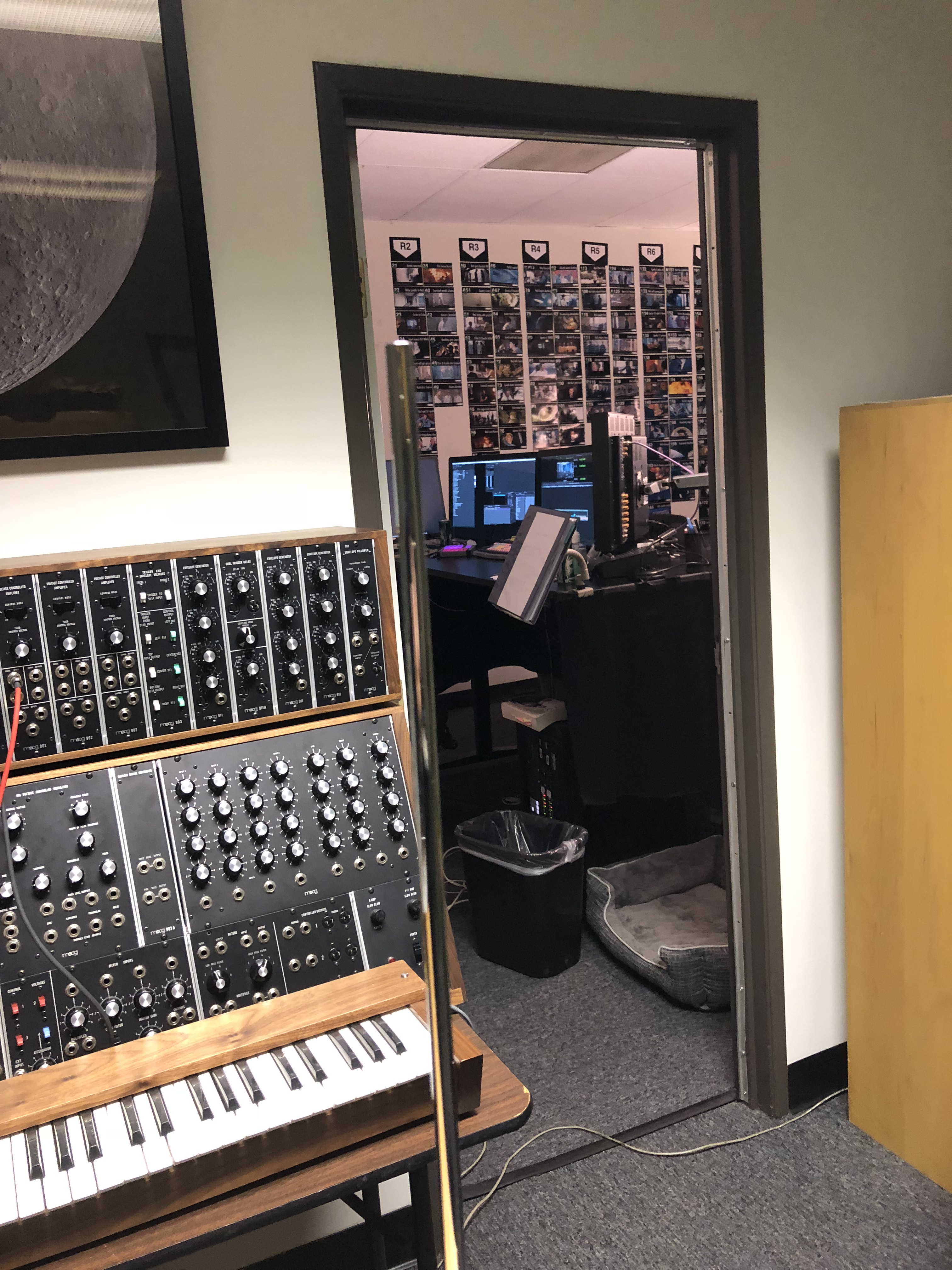
HULLFISH: I’d agree, though I think when I interviewed Tom Cross for First Man, there are even pictures of the composer’s keyboards directly outside Tom’s editing room.
CIARROCCHI: I think I heard they did that on La La Land too. It’s really, really helpful. Especially because the things you’re falling in love with — you can actually have!
HULLFISH: Thank you so much for your time. I learned a lot. This was a super interesting conversation.
CIARROCCHI: Thank you for inviting me to do this. I’ve read a lot of your interviews and I’m honored to be included in that group.
HULLFISH: Thank you. It was wonderful to talk to you.
CIARROCCHI: Great talking to you. A pleasure.
 To read more interviews in the Art of the Cut series, check out THIS LINK and follow me on Twitter @stevehullfish
To read more interviews in the Art of the Cut series, check out THIS LINK and follow me on Twitter @stevehullfish
The first 50 interviews in the series provided the material for the book, “Art of the Cut: Conversations with Film and TV Editors.” This is a unique book that breaks down interviews with many of the world’s best editors and organizes it into a virtual roundtable discussion centering on the topics editors care about. It is a powerful tool for experienced and aspiring editors alike. Cinemontage and CinemaEditor magazine both gave it rave reviews. No other book provides the breadth of opinion and experience. Combined, the editors featured in the book have edited for over 1,000 years on many of the most iconic, critically acclaimed and biggest box office hits in the history of cinema.

Filmtools
Filmmakers go-to destination for pre-production, production & post production equipment!
Shop Now